


Our Level 1 Blue Skies students had a fantastic day at RAF Valley last week, visiting 202 (R) Squadron. On arrival, Sgt Daz Norman took the students into the helicopter hangar where they had a go at being winched. Sgt Tom Wilson, the winchman, and Flt Sgt Martin Seward, the winch operator, talked to the students about the importance of communication between themselves and the pilot. They demonstrated different ways of communicating, via verbal and non-verbal means, while they simulated rescuing the students from different scenarios. Two students were winched together to be saved from the water, while other students helped their peers be rescued after falling in the mountains. Another group were rescued from a sinking ship. The students had to learn the different signals to tell the winch operator to winch up, down and stop.
Kyle, 13 said “I had a go at being winched when I didn’t really trust the equipment. But afterwards, I trust the winch op, winchman and the equipment.” 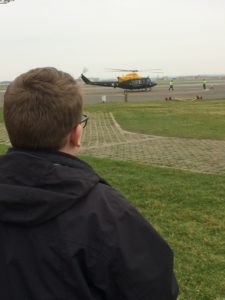
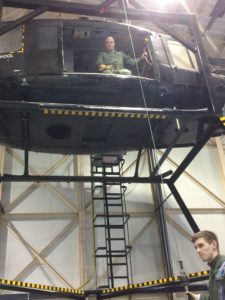
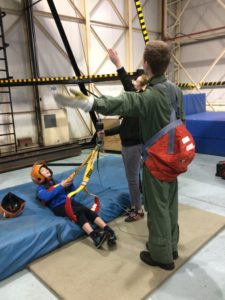
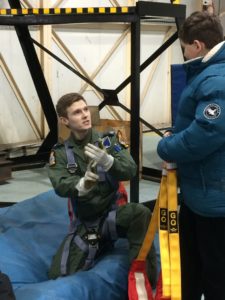
After looking around a helicopter, Sgt Daz Norman talked to the students about the helicopter which caught fire recently in Snowdonia. He discussed the importance of working as a team, from the pilot and crew communicating via radios where they were situated, to the staff back at base co-ordinating the rescue with the air ambulance, Mountain Rescue teams and police. Every person involved was essential for the rescue operation to run smoothly and safely.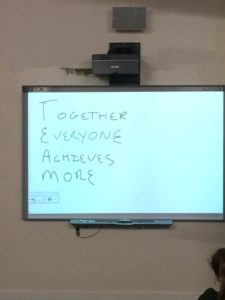
The students then had the opportunity to experience the virtual reality goggles used by the pilot and winch operator to practice co-ordinating rescues. It suddenly became clear how vital excellent communication skills are, as the winch operator sees a very different view to the pilot. The students learnt that the winch operator communicates with the winchman, mainly non-verbally, while he/she also communicates verbally with the pilot. Sgt Daz Norman finished with a talk about the different skills required for teamwork to be successful.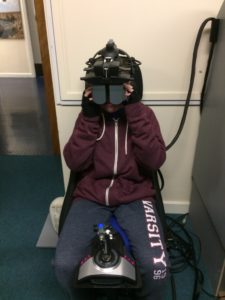
After lunch, Sgt Neil Madden set the students with some communication tasks. In groups of three, one student was blindfolded, another was the observer but was only allowed to communicate through hand signals, and the other was the communicator but could not see the blindfolded person. In their team, they had to direct the blindfolded person to pick up different objects around the gym. It was a great task which clearly demonstrated the need for verbal and non-verbal communication, keeping it simple and excellent listening skills!
The next task was to work together as a class to touch the numbers 1 to 30 in order, with everyone having a go; a seemingly simple task but it did raise some challenges. The students realised that clear communication helped them achieve the task quicker.
Alex, 14 “I improved on my concentration in the number game. I used my mind to read the numbers and tell the people what numbers they had so they could go and get it. During the blindfold challenge, I concentrated on the technique.” 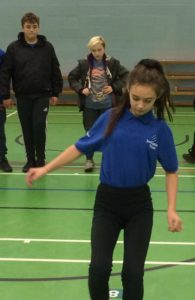
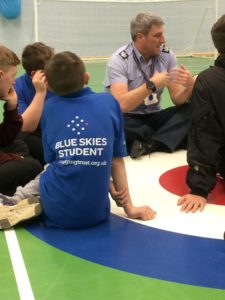
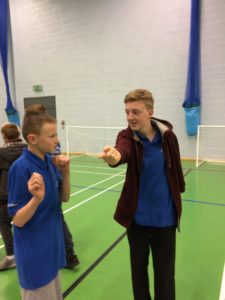
This was an excellent day where the students could work on their communication skills, as well as their own personal objectives, such as being more confident, trusting and staying focussed. Thank you to Sgt Norman for delivering an exciting and informative morning, along with Sgt Wilson and Flt Sgt Seward and the whole of 202(R) Sqn. Thank you also to Sgt Neil Madden for delivering the communication tasks.
